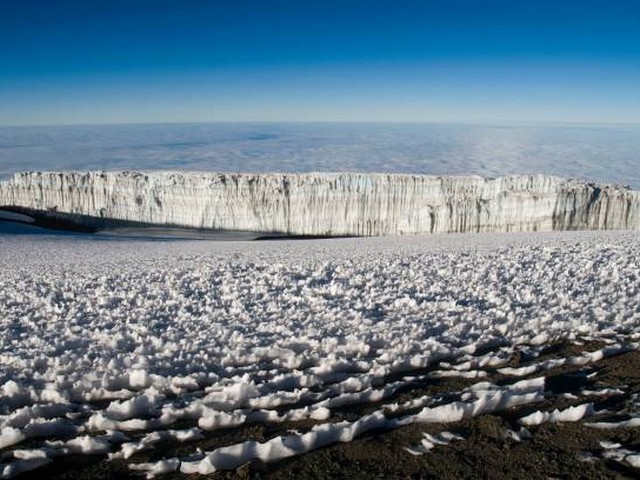Acclimatization Tips to Avoid Altitude Sickness on Kilimanjaro
Scaling Mount Kilimanjaro, the roof of Africa, is a dream many hold dear. The journey to its summit passes through lush rainforests, alpine deserts, and finally the icy cap that crowns its peak. However, the beauty and exhilaration of this trek can be marred by the challenge of altitude sickness. At Kilimanjaro Centre for Trekking and Ecotourism (KCTE), we understand that a successful climb is not just about reaching the top; it’s about enjoying every step of the journey safely and joyfully. That’s why we’re here to share essential acclimatization tips to help you avoid altitude sickness and make your Kilimanjaro adventure unforgettable.
Understanding Altitude Sickness
Before diving into the tips, let’s briefly discuss what altitude sickness is. As you ascend to higher elevations, the amount of oxygen in the air decreases, making breathing more difficult. This can lead to altitude sickness, also known as acute mountain sickness (AMS), which can manifest as headaches, nausea, dizziness, and fatigue. If not properly managed, it can escalate to more severe conditions like HAPE (High Altitude Pulmonary Edema) or HACE (High Altitude Cerebral Edema).
Preparing for Your Kilimanjaro Trek
Start with Fitness
Begin your preparation long before you set foot on the mountain. Engage in regular cardiovascular exercises such as running, swimming, or cycling. Strength training and hiking in hilly areas can also boost your stamina and prepare your body for the strenuous climb.
Consult with a Doctor
Visit your healthcare provider to discuss your plans and any pre-existing health conditions. They might recommend medication to prevent altitude sickness. Moreover, getting vaccinated against common diseases found in Tanzania is also a wise precaution.
Acclimatization Strategies on the Mountain
Choose the Right Route
Kilimanjaro offers several routes, each with different profiles and acclimatization opportunities. At KCTE, we recommend choosing a longer route, such as the Lemosho or the Machame. These routes allow more gradual ascent and ample time for your body to adjust to the altitude.
Walk Slowly
"Pole pole" (slowly, slowly in Swahili) is the mantra on Kilimanjaro. Walking at a slower pace gives your body more time to adapt to the changing altitude without overexerting itself.
Drink Plenty of Water
Hydration is key to helping your body acclimatize. Aim to drink at least three to four liters of water daily to help mitigate symptoms of AMS.
Eat Well
Your body burns a lot of calories at high altitudes, so replenish with nutritious meals. Our KCTE chefs prepare high-energy meals that are designed to sustain you throughout your climb.
Sleep Lower
“Climb high, sleep low” is an effective strategy. This involves trekking to a higher elevation during the day and returning to a lower elevation to sleep. This method helps your body adjust better to the lower oxygen levels.
Listening to Your Body
Recognize the symptoms of altitude sickness early. If you or a fellow trekker begins to feel ill, it’s crucial to inform your KCTE guide immediately. Our guides are trained to handle such situations with professionalism and care, ensuring your health is a priority.
After Reaching the Summit
Reaching the summit is exhilarating, but remember that the descent is part of the journey. Keep applying the acclimatization principles even while going down. This helps avoid any sudden issues as your body readjusts.
Why Choose KCTE for Your Kilimanjaro Trek?
Choosing the right tour operator is crucial for a successful Kilimanjaro climb. Kilimanjaro Centre for Trekking and Ecotourism (KCTE) not only provides seasoned guides who are experts in high-altitude trekking but also ensures your journey is comfortable, safe, and memorable. Our comprehensive acclimatization support maximizes your chance of a successful summit.
Ready to embark on your Kilimanjaro adventure? Remember, proper acclimatization is your key to enjoying the majestic landscapes and thrilling heights of Kilimanjaro without the shadow of altitude sickness. Book your climb with KCTE today, and step into the adventure that awaits you on the mighty Kilimanjaro.
Frequently Asked Questions
1. What is the best time of year to climb Kilimanjaro?
The best times are during the dry seasons: January to mid-March and June to October.
2. How long does it take to climb Kilimanjaro?
It depends on the route, but typically it takes 6 to 8 days.
3. Can children climb Kilimanjaro?
Yes, children from the age of 10 are welcome if they are adequately prepared and accompanied by an adult.
4. What should I pack for Kilimanjaro?
Essential items include thermal layers, waterproof gear, hiking boots, a sleeping bag suitable for extreme cold, sunscreen, sunglasses, and a hat.
5. How fit do I need to be to climb Kilimanjaro?
You should be in good physical health, able to endure long hours of walking, and have some high-altitude experience. Regular training before the climb is highly recommended.
Embark on this journey with KCTE, where your adventure dreams become a memorable reality. We look forward to guiding you to the top of Africa!




